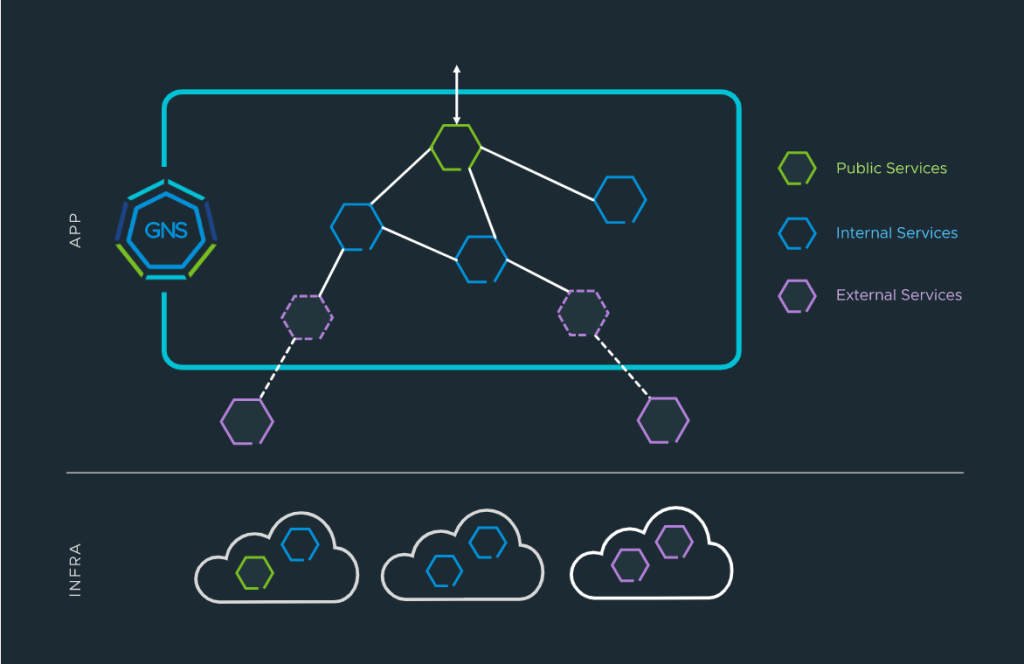
We are pleased to announce that as of March 20, 2023, Tanzu Service Mesh is now generally available for our VMware Partner Connect Cloud Services Providers – SaaS partners through Cloud Partner Navigator. This release delivers an important capstone in VMware’s developer-ready vision of offering its comprehensive Tanzu portfolio for modern applications that we began introducing to our Cloud Services Providers over two years ago.
Here is a brief summary of services we have introduced for our Cloud Services Provider partners during that time:
- Tanzu Kubernetes Grid, our fully compliant Kubernetes offering that provides multi-tenant, multi-cloud Kubernetes clusters. Read more about the latest updates here, here, and here
- Tanzu Mission Control, the centralized Kubernetes cluster management plane for multi-tenant, multi-cloud partner, and tenant environments
- Tanzu Application Platform and VMware Data Solutions, for consistent build and lifecycle management of modern applications, leveraging class-leading database and messaging services
- VMware Application Catalog, a catalog of trusted, continuously maintained, and verifiably tested open source images, custom-built to enterprise specifications and privately delivered for partner or tenant consumption
- Aria Operations for Applications, the full-stack enterprise visibility platform that analyzes and visualizes metrics, traces, and logs from distributed applications, containers, microservices, cloud infrastructure, and even business data
How is VMware Helping Cloud Providers Attract Cloud-native Developer Workloads with Tanzu Service Mesh?
With Tanzu Service Mesh, partners can offer advanced, end-to-end connectivity, security, and insights for their tenant’s modern applications – across application end-users, microservices, APIs, and data – enabling compliance with Service Level Objectives (SLOs) and data protection and privacy regulations. Tanzu Service Mesh abstracts the service mesh from the modern applications, clouds, and infrastructure that they are tied to, so DevSecOps teams can have a globally available, reliable service mesh for discovery, visibility, control, and security across clusters, clouds, and workload types wherever those workloads reside. Here are some of the key features of Tanzu Service Mesh that DevSecOps teams are seeking in their service mesh solution:
- Data-plane autoscaling, high availability, and resiliency using Service Level Objectives
- Multi-cluster operations with global load-balancing for multi-tier and multi-AZ environments
- Seamless simplicity and integration with Tanzu Mission Control and Tanzu Kubernetes Grid
- Single service mesh capable of bridging between private cloud, hybrid cloud, and multi-cloud
 Global Namespace
Global Namespace
How Does Tanzu Service Mesh Help Cloud Services Providers be Developer Ready?
Tanzu Service Mesh in particular is helpful for partners who are building or have an established modern application services cloud for their customers. With Tanzu Service Mesh, partners can offer these important capabilities for modern applications as self-managed or fully-managed services offerings for their tenants:
- A global namespace for all microservices and APIs needing routing and security
- Secure end-to-end encryption of APIs endpoint communications, both for north-south API communications across clouds and at the edge, and east-west communications between microservices
- Centralized visibility, drift detection alerts, and remediation of API abnormalities
- Large-scale multi-tenancy for enterprise partner environments
- Faster application delivery through consistent, centralized, and policy-driven connectivity
 Tanzu Service Mesh UI
Tanzu Service Mesh UI
Learn More About Tanzu Service Mesh for Cloud Services Providers:
We are thrilled about Tanzu Service Mesh as our newest SaaS offering for our Cloud Services Provider partners, and how they can help address their customer requirements as they continue on their modern application transformation journeys. We will continue posting new technical and product information on our VMware Cloud Provider blogs. Join us by following the blog directly using the RSS feed, on Facebook, LinkedIn, and on Twitter, and by visiting our YouTube channel.

